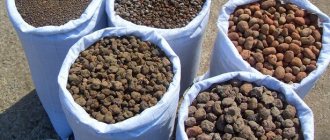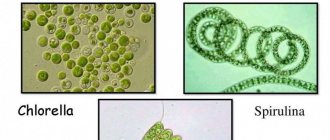How to make diesel fuel with your own hands
The raw materials used are vegetable or animal fats, which are a mixture of esters combined with glycerol trihydric alcohol molecules.
Biofuel (in this case, methyl ether) can be obtained by replacing the glycerin contained in the oil with alcohol. This process is called transesterification. From one ton of vegetable oil and 110 kg of methyl or ethyl alcohol in the presence of 12 kg of catalyst in the form of NaOH alkali, 970 kg of biodiesel and 150 kg of glycerin can be obtained. The latter substance is used in the production of soap and cosmetics.
During the manufacturing process, vegetable oil is heated to 50 ºС and thoroughly purified by repeated filtration to remove mechanical impurities or food residues. The alkali is combined with methanol and the methoxide formed as a result of the reaction is added to warm (to speed up the reaction) vegetable oil. The main volume of methyl alcohol is poured there.
The mixture is thoroughly mixed and allowed to stand for 4-8 hours at a temperature of 55 to 70 ºС. It is stratified into glycerin in the lower part, biodiesel (ether) in the upper part and a soap layer in the middle. The glycerin is drained through the lower hose, the soap layer is also removed, and the diesel fuel is thoroughly cleaned by washing with water, followed by drying (heated to 65 ºC).
What is good and what is bad about biodiesel?
It is considered a good fuel because it does not contain sulfur, and when burned, it emits much less air pollutants than its mineral counterpart (DF). It has excellent lubricating properties, which increases engine life. If it gets on the soil or in water bodies, it does not pose a danger - under natural conditions it decomposes in 28 days.
Biodiesel also has disadvantages:
- High temperature of ultimate filterability. In some types of biodiesel, the formation of paraffin agglomerates begins already at +15 ºС, in others, for example, in those made from rapeseed oil, at several degrees of sub-zero temperature. Therefore, biodiesel can only be used in cold climates with a fuel heating device, which increases the cost of the car owner for the purchase and installation of the heater.
- Biodiesel cannot be stored for more than 3 months.
- The cost of industrial biodiesel is still high.
Why do you need to make diesel fuel yourself?
From the description of the process, it is obvious that fuel for diesel engines can be made by every technically competent person with his own hands. Complex equipment is not required; the business can be organized in the garage.
Is there any point in such home production? If raw materials are purchased at real retail prices, biodiesel will turn out to be much more expensive than diesel fuel purchased at a gas station. If the ingredients are obtained cheaply or completely free, then questions remain: are these efforts worth the result and is it justified to endanger yourself and others in a garage, private home or other place.
Purchase and sale of business equipment
Purchase and sale of business equipment
- home
- Business ideas for small businesses
- Manufacturing business
- How to make diesel fuel from vegetable oil
- Enterprise management
- Portal Policy
- Feedback
- about the project
- Company news
- Market overview
2000 - 2021 "Hyper-Press"Equipnet.ru - "Equipment for business"
All materials on this site, the copyright of which belongs to EquipNet.ru, cannot be copied.
- Entrance
- Registration
If you are not registered on the portal, fill out the Registration form
After registration you will be able to add to the catalogs for free:
So what is biodiesel?
In fact, biodiesel is a mixture of esters, mainly methyl ester, as a result of a chemical reaction. Its advantages include:
- vegetable origin, thanks to the ability to grow plants, we obtain a renewable source of fuel;
- biological safety, biodiesel is environmentally friendly, its release into the environment does not cause any harm to it;
- lower emissions of carbon dioxide and other toxic substances;
- low sulfur content in the exhaust gases of engines using biodiesel;
- good lubrication characteristics.
Essentially, vegetable oil is a mixture of esters with glycerin, which gives it viscosity. The biodiesel production process involves removing glycerin and replacing it with alcohol. It is worth noting that the disadvantage of such fuel is the need to heat it at low temperatures or use a mixture of biodiesel and regular diesel fuel.
Home production
The first and one of the main problems is where to get enough raw materials. It’s good if you are a farmer and grow rapeseed or are the owner of a restaurant where waste vegetable fats remain. If you don’t have access to a source of inexpensive raw materials, then you won’t be able to make biodiesel with your own hands. It will be unprofitable to buy oils, especially considering the second problem - fuel quality.
To safely use home-produced biodiesel in any car or heating boiler, the quality of the product must be ensured. Otherwise, you will be faced with endless repairs and cleaning of your engines and boiler nozzles. And for this, the technology must be organized and verified at a high, and not artisanal level. In turn, this will lead to the same costs, whose payback is in question.
Old cars and tractors with unpretentious engines and fuel systems can put up with the low quality of biodiesel for a long time. The same applies to heating drip stoves and boilers with a Babbington burner, which are undemanding in terms of fuel quality. In this case, the simplest installation for the production of biodiesel is suitable; in other cases, the technology will have to be complicated. So, to assemble the installation you will need:
- 3 plastic containers, 2 of them large and one smaller;
- 5 ball valves;
- pipes and fittings (tees, elbows);
- electric heating element with thermostat;
- pump.
To master the production of biodiesel at home, you need to place the containers on metal stands with the neck down, and make closing holes on top for filling the components. You can also use metal barrels or homemade tanks made from large-diameter steel pipes. At the bottom of each vessel you need to attach a fitting, and screw a tap to it, then connect all the elements together with pipes, as shown in the figure:
The middle container will serve as a reactor where it is necessary to build a heating element. Oil is poured into another large tank, and methyl alcohol into a small one. First, caustic soda is added to methanol, which plays the role of a catalyst. Having opened the taps so that substances from the auxiliary containers enter the reactor, the pump and heating element are turned on, whose thermostat is set to a temperature of 60 °C.
In the video, Top Gear presenter Jeremy Clarkson explains and shows how to make biodiesel at home:
How can biofuels be used?
The use of fat and oil as fuel can be carried out in the following ways:
- Directly by pouring oil into the tank. The disadvantage of this approach will be its incomplete combustion, mixing with the lubricant and deterioration of its lubricating properties, as well as the appearance of deposits on injectors, rings, pistons due to the increased viscosity of vegetable fuel.
- By mixing it with kerosene or diesel fuel.
- By converting vegetable oil, the source of which can be rapeseed, corn, sunflower, etc., and ultimately obtaining biodiesel.
The oil conversion technology is considered the most complex of those mentioned, but nevertheless, it is so simple that it is easily implemented, thanks to which you can obtain biodiesel at home.
Biodiesel from rapeseed
With the appropriate technology for growing rapeseed from 1 hectare of area, the resulting harvest yields 20 tons of green feed, 20 tons of green fertilizers, 3-3.5 tons of seeds, 13 quintals of oil, 16 quintals of cake (meal), 100 kg of honey, 500 kg of paper. Intended for the production of rapeseed oil of different varieties, it must have a moisture content of 5-7%, contamination of no more than 1%, erucic acid content of less than 2% and acid number of no more than 3. Violation of these requirements impairs the efficiency of squeezing and esterification, and may also cause a decrease in oil quality. This is influenced by the degree of seed maturity and storage conditions. From 3 tons of seeds with a moisture content of 7-8% you can get 1 ton of biodiesel, 1.9 tons of meal (with an oil content of 8-12%), and about 0.2 tons of glycerin.
According to the State Statistics Committee of Ukraine, 54% of the rapeseed crop grown in 2004; 67% - in 2005; 78% - in 2006; 87% - 2007; 83% - 2008 exported to EU countries. Only a few farms produce biodiesel for their own needs, using mini-plants and research facilities, the productivity of which does not exceed 10 thousand tons of biofuel per year. The production and use of liquid biofuels on an industrial scale is practically absent in Ukraine. According to the Ministry of Agrarian Policy of Ukraine, such factories operate successfully in Lviv, Kherson, Odessa, Rivne, Vinnitsa, Donetsk, Ternopil and Poltava regions. The total capacity of the workshops is about 600 tons per day.
During the period July-April 2008-2009 MY, Ukraine exported 2630.08 tons of rapeseed. During the same period of 2009-2010 MY, it exported 1,757.76 tons of rapeseed to foreign markets. The largest importers of Ukrainian rapeseed are the countries of the European Union (EU-27). They import rapeseed as a feedstock for the biodiesel industry. In particular, during the period July-April 2010 MY, 469.32 thousand tons of rapeseed were exported to the Netherlands (27%), in Belgium - 346.01 thousand tons (20%), to France - 291.75 thousand tons (17 %), Poland - 134.46 thousand tons (8%).
Biodiesel production in Russia
In Russia there is not yet a unified state program for the development of biodiesel fuel. The Russian Ministry of Agriculture has developed a bill according to which conditions will be created in Russia for the development of the bioindustry sector.
The department believes that up to 5.5 million tons of rapeseed oil can potentially be produced annually in Russia:
– 0.5 million tons can be used for food needs; – about 2 million tons to be exported in the form of methyl ether; – 2.5 million tons to be used domestically as biofuel.
According to the ministry’s plans, in 2021 in Russia biofuel should increase its market share from zero to 8% and amount to 6–6.5 million tons. An obstacle to the development of a new product may be the unresolved issue of excise taxes levied on bioethanol in Russia. A liter of alcohol in our country is subject to an excise tax of 59 rubles, which for now makes no sense in investing in the production of this type of fuel.
How is biodiesel produced?
The raw material for this type of fuel can be any crop from which a large amount of vegetable oil is obtained. Most often these are rapeseed and soybeans; their processing gives the maximum yield of raw materials and, accordingly, the final product in the form of biodiesel.
Animal fats, which are waste from meat processing plants, tanneries and other enterprises, are also used. Burnt vegetable oils from restaurants and other catering establishments are also suitable.
It should be noted that biodiesel from oil of plant and animal origin is produced using relatively simple technology. The main stages of the technological process are as follows:
- coarse and fine purification of raw materials (oil) from the smallest impurities;
- mixing oil and methyl alcohol with the addition of an alkaline catalyst in a reactor. The proportions of raw materials and methanol are 9: 1, the catalyst is sodium or potassium hydroxide;
- heating to 60 °C and stirring at this temperature for approximately 2 hours. The stage is called esterification;
- the resulting substance settles in a separate container and is separated into 2 substances - the glycerol fraction and the biodiesel itself;
- substances are separated in a separator, after which the fuel undergoes heat treatment to evaporate water from it.
The technological equipment for the production of biodiesel is also not very complex and consists of several containers connected to each other by pipelines, as well as pumps - the main one and several metering ones. Since all stages are automated at enterprises, the reactor and other tanks are equipped with temperature and level sensors, and the pumps are controlled by a controller. All data about the ongoing process is displayed on the operator’s display.
About the pros and cons of biodiesel
Biofuels, which are made from plants, fats or oils, have advantages and disadvantages. Among the disadvantages of the product are:
- high cost;
- the need to sow large areas of land;
- the shelf life is limited to three months, since after this time the fuel decomposes;
- combustion produces carbon monoxide;
- the amount in the internal combustion engine should not exceed sixty percent.
Fuel has more advantages:
- waste product elements (sulfur, carbon dioxide) do not pollute the environment;
- when it gets into water, biofuel is gradually destroyed by microorganisms without harming the environment;
- high level of efficiency;
- biodiesel engines work better than petroleum fuel engines;
- It is acceptable to obtain the product at home.
History of development
Transesterification of vegetable fats was carried out in 1853 by scientists E. Duffy and J. Patrick, long before the launch of the first diesel engine. On June 10, 1893, in Augsburg, Germany, Rudolf Diesel tested his first single-cylinder engine, which was 3 m long and weighed 4.5 tons. The engine exploded and nearly killed the inventor. In memory of the event, June 10 was proclaimed “International Biodiesel Day.” In 1900, at the World Exhibition in Paris, Diesel, demonstrating his engine, received the main award.
Diesel believed that the future for its engines was using biofuels. In 1912 he said "the use of vegetable fats for the production of fuel may seem unimportant now, but in the course of time such fats may become as important as the products of petroleum and coal tar are in our time."
During the 1970s, diesel engine manufacturers shifted their engines to use diesel fuel made from petroleum, which has a lower viscosity than vegetable fats. The oil industry was able to make inroads into the fuel market because producing fuel from oil was significantly cheaper than from biological raw materials. As a consequence, many years of decline in biofuel production. Only recently, amid environmental concerns and decreasing cost differentials, have biofuels such as biodiesel become a viable alternative.
Research into the use of transesterified sunflower oil and improving its quality to the standards of conventional diesel fuel began in South Africa in 1979. Until 1983, the research results were published. The technological process made it possible to produce biodiesel, the quality of which corresponded to the standards of conventional diesel fuel. An Australian company, Gaskoks, received the technology from South African researchers, and built the first pilot plant for biodiesel production in November 1987, and the first mass production plant in April 1989 (with the capacity to process 30,000 tons of rapeseed per year).
During the 's, factories were built in many European countries, in particular the Czech Republic, Germany and Sweden. France began its own production of biodiesel from rapeseed oil; 5% biodiesel is added to regular diesel fuel, and 30% to diesel fuel used by public transport. Experiments are ongoing using 50% biodiesel. Meanwhile, countries around the world are beginning to develop their own production: in 1998, the Austrian Biodiesel Institute identified 21 countries with commercial biodiesel production projects.
In September, Minnesota became the first US state to have a legislative requirement that allows the sale of only diesel fuel containing at least 2% biodiesel.
Benefits of Biodiesel
Biodiesel has the following advantages:
- Economical. Biofuels are cheaper to produce compared to petroleum fuels.
- Versatility. Suitable for all car engines.
- Safety for the environment. The use of this type of fuel reduces carbon dioxide emissions into the atmosphere by 5%. Biodiesel combustion products contain significantly less sulfur, carbon monoxide and soot.
- Engine protection. Despite the minimal percentage of sulfur, this fuel does not lose its active lubricating properties due to the oxygen it contains. Studies have shown that the service life of the engine and fuel pump when using biodiesel increases by 60%.
- Flame resistant. The flash point of biofuel is higher than that of gasoline - more than 100°C.
Pletnev M.Yu., professor, doctor of chemical sciences
MATHT im. M.V. Lomonosova, 119571 Moscow, prosp. Vernadsky, 86
Eco-friendly fuels, primarily those from plant biomass that accumulate solar energy, are becoming increasingly attractive around the world. The future is seen in “green” products and technologies that can radically improve the environment and quality of life by reducing environmental pollution and reducing greenhouse gas emissions that cause dramatic climate change.
The German engineer Rudolf Diesel created a diesel engine in 1897, the first example of which ran on vegetable (peanut) oil. Subsequently, it turned out that lighter, less viscous methyl (ME) and ethyl (EE) esters of fatty acids, which are usually understood as “biodiesel,” are preferable for a number of technical characteristics. They were remembered as a potentially affordable fuel for diesel engines during the oil crisis of the 70s, then returned in the 90s, when the world's leading economies were faced with problems of environmental pollution, the greenhouse effect and depletion of oil fields.
To date, different countries, taking into account climatic zones and agricultural traditions, have relied on different sources of fat and oil raw materials in the production of biodiesel. Thus, the United States primarily focuses on soybeans and animal fat, Europe on rapeseed, Malaysia and Indonesia on oil palm, and the Philippines on coconut palm. In addition, many countries are trying to use technical and waste oils and fats.
Biodiesel has a number of undeniable advantages over conventional diesel fuel, the main ones being the following:
· lower level of harmful emissions, especially particulate matter (smoke);
· almost neutral effect in terms of greenhouse gas emissions;
· significantly better performance in terms of toxicity and biodegradability;
· less wear (due to the lubrication effect of biodiesel) and, accordingly, increased engine service life;
· better characteristics during storage and transportation;
· a good incentive for the development of the agricultural sector of oilseeds and feed crops, as well as oleochemistry and related industries;
· less dependence on prices for petroleum products.
Among the possible disadvantages of biodiesel are the following. In undiluted form, it can damage rubber hoses and gaskets and require their replacement with parts made of more resistant materials. Due to its high solvent power, biodiesel is capable of flushing out deposits that had previously formed there from engines, and this can cause operational failures. This can lead to problems with warranty service for equipment. Biodiesel may not be completely resistant to oxidation during storage and an antioxidant may be necessary. Diesel fuel with a high content of biodiesel, especially B100 grade, made from raw materials with a low iodine number, can create problems due to thickening and clogging of the fuel filter in the cold season.
To ensure the required performance characteristics of biodiesel, a set of certain properties of oils and fats used in its production is important. Of the chemical properties, the following are important: saponification number (n.o.), iodine number, fatty acid composition, presence of free fatty acids (n.n.), sulfur, nitrogen, ash content, presence of unsaponifiable components, phosphatides and moisture content.
Characteristics of some oils and esters obtained from them
| Oil or fat | Melting point, ºС | Iodine number | Cetane number | ||
| oil/fat | methyl ether | ethyl ether | |||
| Rapeseed oil | 5 | 0 | –2 | 97–105 | 55 |
| Canola oil | –5 | –10 | –12 | 110–115 | 58 |
| Sunflower oil | –18 | –12 | –14 | 125–135 | 52 |
| Olive oil | –12 | –6 | –8 | 77–94 | 60 |
| Soybean oil | –12 | –10 | –12 | 125–140 | 53 |
| Cottonseed oil | 0 | –5 | –8 | 100–115 | 55 |
| Corn oil | –5 | –10 | –12 | 115–124 | 53 |
| Coconut oil | 20–24 | –9 | –6 | 8–10 | 70 |
| Palm kernel oil | 20–26 | –8 | –8 | 12–18 | 70 |
| Palm oil | 30–38 | 14 | 10 | 44–58 | 65 |
| Palm Olein | 20–25 | 5 | 3 | 85–95 | 65 |
| Palm stearin | 35–40 | 21 | 18 | 20–45 | 85 |
| Animal fat | 35–40 | 16 | 12 | 50–60 | 75 |
| Pork fat | 32–36 | 14 | 10 | 60–70 | 65 |
Oils and esters with low iodine numbers (from coconut and palm oils, animal fat) have higher cetane numbers and, therefore, greater energy potential. Most oils and esters, as follows from the table above, fit into the optimal range of cetane numbers for diesel fuels (45÷75). It is also important that oils and fats with a low iodine number have high melting points and often solidify at temperatures above room temperature. This property is reflected in the clouding temperatures, filter clogging and melting temperatures of ME and EE fatty acids obtained from them, which imposes restrictions on their use as fuel in all seasons except summer.
Oils with a high iodine number and low melting point are most suitable for the production of biodiesel used in cold climates. Research aimed at developing winter biodiesel is especially relevant for northern countries such as Russia, Canada and Scandinavian countries. However, it is worth noting that this increases the risk of auto-oxidation and polymerization of the fuel into a dense rubber-like mass. Consequently, biodiesel with a high iodine number cannot be stored for long periods of time, and to increase shelf life it is advisable to introduce an antioxidant. Biodiesel from semi-drying oils (soybean, sunflower) is not as susceptible to oxidation and polymerization as biodiesel from drying oils.
Currently, the real limiter for increasing the share of biodiesel in diesel fuel is the insufficiently low pour point (loss of fluidity). The possibility of using anti-gelling agents and antifreeze exists, but the achieved effect (additionally minus 3–5 ºС) is not so significant. Moreover, their introduction should not discredit the very idea of environmentally friendly fuel grown in the field or extracted from wastewater. The addition of bio-octanol or “organic” methyl isoamyl ketone (additives potentially suitable for reducing the freezing point and fire hazard characteristics) can significantly increase the cost of fuel.
Another way is to use oils with a high content of polyunsaturated fatty acids (high iodine value) to produce biodiesel. The ME and EE obtained from them have a pour point of about –10 ºС or lower. When adding them in an amount of 5%, the pour point of B5 fuel will be about –25 ºС. This may be sufficient for the operation of vehicles in winter in the countries of continental Europe, but not enough for operation in Russia. On the other hand, with increasing unsaturation, the calorific value of biodiesel decreases, and MEs of polyunsaturated acids are more susceptible to autoxidation and polymerization.
Biodiesel fuel's heat content per unit mass is typically 9–13% lower than conventional diesel fuel. When using biodiesel, the power of a diesel engine is reduced by 5–8%. The reduction in torque with the transition to biodiesel is more noticeable at low vehicle speeds. So, at 1700 rpm it is 5% lower, and at 1300 rpm it is only 3% lower. The exhaust opacity for biodiesel B100 is on average 75% lower than for conventional diesel fuel.
The density of biodiesel (approx. 0.88) can be higher than the density of diesel fuel from petroleum: 0.83–0.90 for brands intended for high-speed engines, and up to 0.93 for low-speed engines. The density of biodiesel of different origins is almost the same, with the exception of biodiesel from castor oil, for which d20/4 = 0.92.
Ash content is an indicator of the presence of metals and silicon compounds in the fuel. High ash content can cause increased wear and clogging of the engine injection system, as well as carbon formation. No particular difference in performance characteristics was identified between ME and EE, therefore, when choosing an esterification agent, they are mainly guided by economic considerations.
Waste oils and fats may be partially saponified and contain a high percentage of free fatty acids. As with conditioned oils, they use an acidic rather than an alkaline flush. Due to high concentration values, waste oils cannot be immediately sent for transesterification: they are dried and converted into fatty acid esters with a methylating agent, for example, dimethyl sulfate (by-products are sodium or potassium sulfate and soap).
Recently, in a number of EU countries, diesel fuel for trucks used in long-distance transportation has begun to be diluted with 2-3% refined rapeseed oil as such. At the same time, avoiding the duty imposed on fuel made from petroleum feedstock compensates for some loss in power and range. On the other hand, carbon formation in the engine increases, which is generally typical for high-molecular and viscous types of diesel fuel.
Until recently, in the production of biodiesel, washing raw MEs with warm water was widely used, which led to the need for subsequent drying. The latest innovation is the abandonment of wet cleaning of ME and the transition to cleaning with special sorbents. At the same time, the quality of the fuel is significantly improved, in particular, its corrosion activity caused by the presence of moisture and the formation of deposits in the cylinder head caused by the presence of soap are reduced.
The issue of the quality of oil and fat raw materials (and at the same time the frost resistance of fuel and NOX) is resolved by “synthetic” biodiesel, the production of which was started by the Neste Oil company in June 2007 using NExBTL technology. It is important that a variety of raw materials can be used for its production - from standard fats and oils to all kinds of waste.











